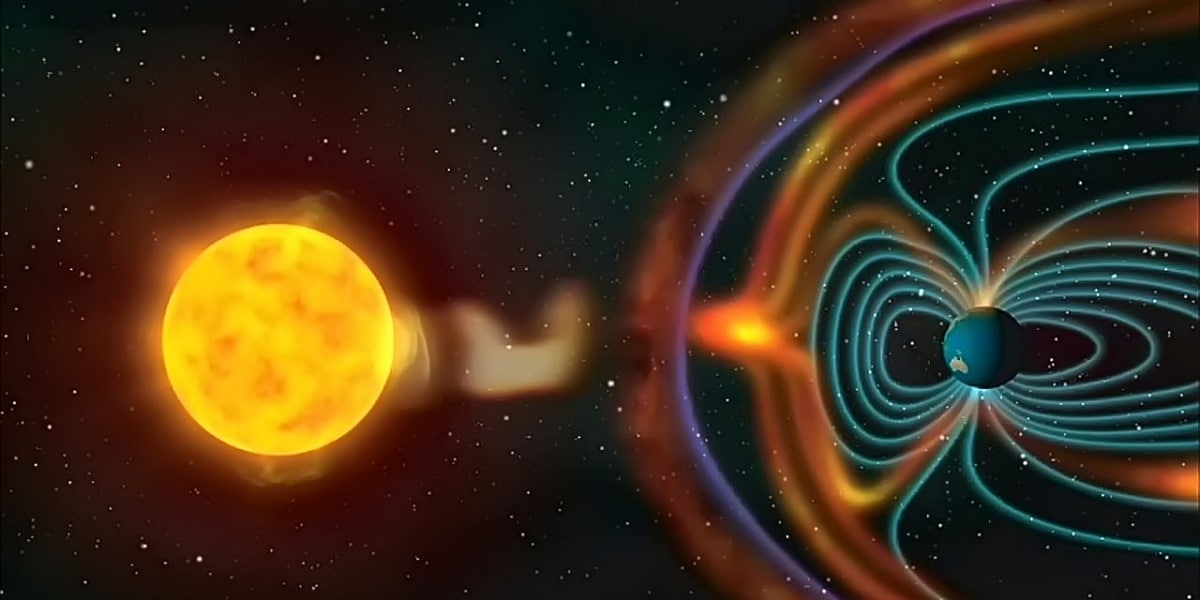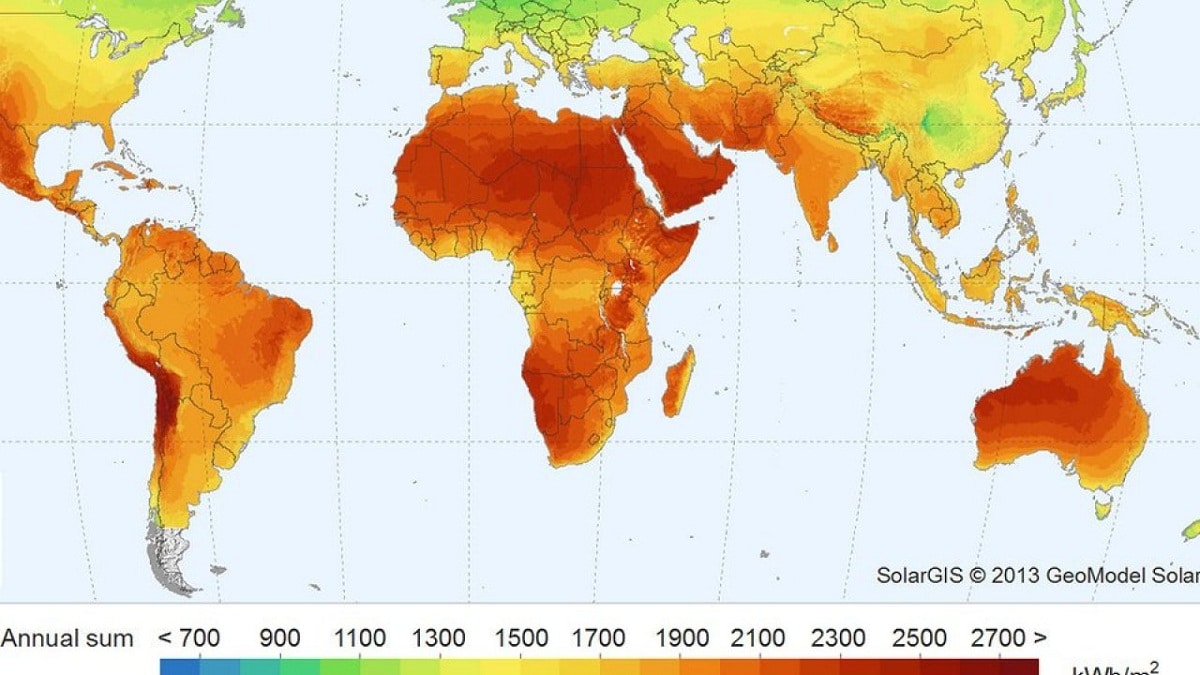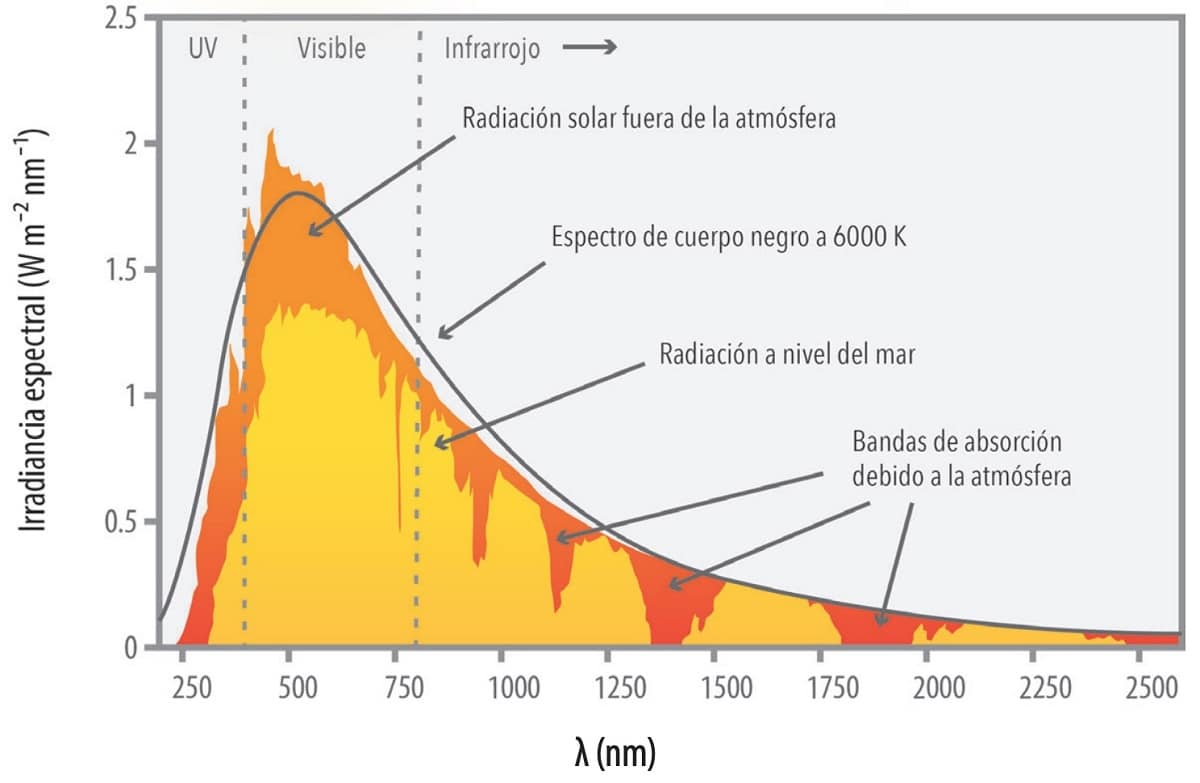
Today we are going to talk about a type of variable that is quite important when establishing a type of climate in a certain region. It's about the irradiance. Irradiance is the quantity that measures the energy per unit area of incident solar radiation on a given surface. This amount of solar radiation that hits a surface is measured over the specified space and time.
In this article we are going to tell you everything you need to know about irradiance and the importance of establishing the types of climate.
Key features

Irradiance is the magnitude that helps us measure how much solar radiation falls on a certain surface and during a certain time. It is known that not all the solar radiation generated by the sun reaches our planet. Irradiance was expressed in units of power per area. Values are normally stated in watts per square meter. If we refer to solar irradiance we will be talking about the amount of irradiance that a given surface receives per unit of time.
For example, we can say that the irradiance in a place is 10 watts per square meter and hour. This means that this amount of solar radiation falls on one square meter every hour. In this way, we can know how much solar radiation a certain surface receives over time to establish what type of climate prevails in a certain area.
We know that solar radiation is an important variable for the value of temperatures in a place. If this place receives a large amount of solar radiation, it is normal that it has a higher temperature. In addition, these values are those that establish the prevailing wind regime and some of the atmospheric phenomena that give rise to rainfall. The sun is the engine that causes atmospheric phenomena such as precipitation to be generated in the troposphere. It is solar radiation that heats part of a surface, causing the surrounding air to heat up and tend to rise.
In the area where the air rises, a kind of gap will be created that must be filled by another mass of air. This is how wind regimes are established. The more difference there is between the densities of the air, the greater the wind. In addition, these are the favorable conditions for the creation of anticyclones and storms.
Origin of irradiance

From a technical point of view, solar radiation on the earth's surface is a way of adding a certain time interval in which the radiation affects a surface filtered by the interposition of the atmosphere. The data that the solar irradiation gives us on the surface will depend on the time of year, the latitude, the climate in general and the time of day in which we are.
Electromagnetic radiation comes from the sun. It is an energy from the nuclear fusion reaction that takes place constantly inside the sun. This nuclear reaction two hydrogen nuclei combine to form a helium nucleus. During this combination of atoms, a large amount of energy is released, which is released in the form of radiation.
It must also be taken into account that the heat generated by this reaction is responsible for the sun being a gigantic incandescent mass that generates the heat that reaches the earth's surface. We must bear in mind that our planet is located in what is known as the "habitable zone". That is to say, it was close enough for the sun to warm us, but far enough for it not to burn us.
The outer surface of the sun is about 5500 degrees Celsius. This star emits a large amount of electromagnetic radiation in a wide wavelength and frequency range. This electromagnetic radiation ranges from ultraviolet to infrared, the region visible to humans being called the rainbow. The spectrum of solar radiation is the one that encompasses all wavelengths that the sun gives off, whether one is visible to humans.
Types of irradiance

There are several types of irradiance depending on their characteristics and their origin. We will analyze each one of them step by step:
- Total solar irradiation: it is that measurement that encompasses all wavelengths per unit of would that affect the upper atmosphere of our planet. It is usually measured perpendicular to sunlight entering the atmosphere.
- Direct normal irradiance: it is the one that measures the earth's surface in a certain location. To do this, an element is used on the surface placed perpendicular to the sun. The total direct irradiance will be equal to the extraterrestrial irradiance above the atmosphere, minus the atmospheric losses due to the absorption and scattering of light by wind and clouds. These losses can be increased or reduced depending on the time of day, latitude, cloudiness, and moisture content, among others.
- Diffuse horizontal irradiance: it is also known by the name of diffuse sky radiation. It is the radiation in which radiation from light scattered through the atmosphere reaches the earth's surface. This quantity can be measured on a horizontal surface with radiation coming from all points in the sky. If the atmosphere did not exist there would be no diffuse horizontal radiation.
- Global horizontal irradiance: Finally, this type of irradiance is what measures the total radiation of the sun on a horizontal surface on the earth. It is counted as the sum of the direct irradiance and the diffuse horizontal irradiance.
All these values are established in order to know the climatic characteristics of a specific area. In addition, it is used in numerous studies for the development and construction of renewable energies that work with the sun. An example of this is photovoltaic solar energy. To carry out a feasibility study of photovoltaic solar energy, it is necessary to know the amount of solar radiation that will affect the surface of the roof of the house throughout the year. In addition, values of other variables such as cloud cover, humidity and wind regime, among others, will be required.
I hope that with this information you can learn more about irradiance.